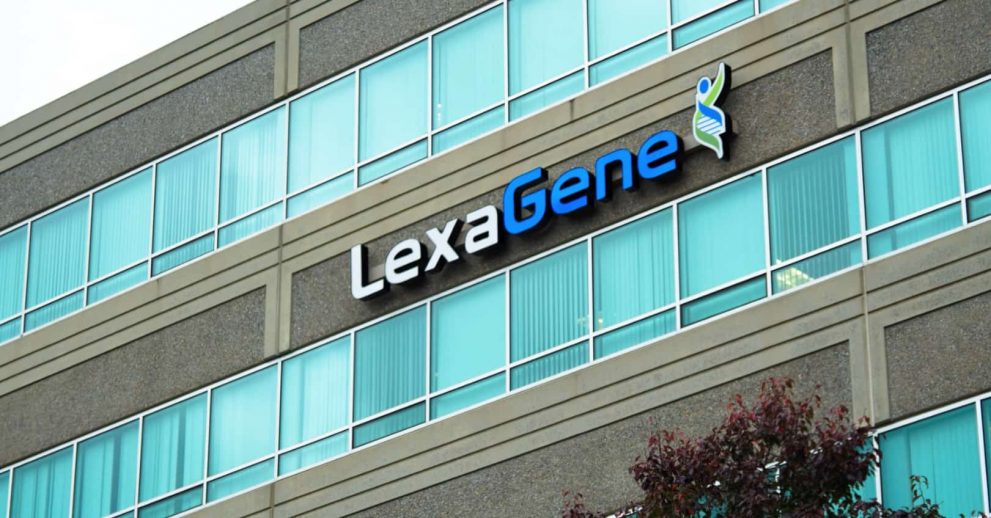
After reporting its second quarter financials, iA Capital Markets analyst Chelsea Stellick has slightly modified her view on medical device company LexaGene (LexaGene Stock Quote, Charts, Analysts, Financials, News TSXV:LXG), maintaining a “Buy” rating while lowering her target price to C$1.00/share from C$1.50/share in an update to clients on Wednesday.
LexaGene is a med-tech device company developing a fully automated pathogen detection instrument to prevent and diagnose disease in food safety, veterinary and human diagnostics, water quality monitoring, aquaculture pathogen surveillance and others.
LexaGene reported on Tuesday its second quarter financial results, which included cash burn of $2.7 million, a significant increase from the $1.8 million in cash burn in the same quarter of 2020, with Stellick attributing the increase to higher headcount, R&D and manufacturing costs. (All figures in US dollars except where noted otherwise.)
The company’s revenue for the quarter totalled $41,000, contrasted with a $133,000 cost of product revenue; as of August 31, LexaGene had $4.2 million in cash available, providing a cash runway late into the fourth quarter of 2021 for the company, assuming no warrants or options are exercised.
“Although we expect gross margins to be strong once LXG scales up production and sales, the lack of gross profit from early adopter sales is a near-term headwind that will necessitate more dilution to fund expenses since incremental sales this year do not flow through to the bottom line,” Stellick said.
Stellick notes that, within the second quarter, the company sold two of its MiQLab machines to veterinary hospitals in June, with no sales in July or August despite the expanded sales force, prompting Stellick to revise her forecast of MiQLab instrument sales in F2021 from 14 to 10.
Its veterinary diagnostics have gotten the attention of the industry, having been selected as a Best in Show Spotlight company at the Petcare Innovation Summit to be held in Boston in early December.
“I’m pleased the selection committee recognized how innovative and revolutionary the MiQLab System is for the veterinary industry,” said Dr. Jack Regan, LexaGene’s CEO and Founder in the company’s October 27 press release. “The MiQLab allows for in-hospital evidence-based decision making so antimicrobials are only prescribed when necessary and are appropriately selected.”
“I’m excited to have LexaGene lead the way to promote a new wave of diagnostic testing for the veterinary market,” Dr. Regan added. “This speaking engagement gives the Company the opportunity to speak directly to industry leaders as well as investors focused on funding innovative life sciences companies.”
The MiQLab system is not limited to just veterinary usage, as the company announced an agreement with the U.S. Army’s Combat Capabilities Development Command (DEVCOM), with an aim toward fostering innovative biothreat defense capability development, which is part of DEVCOM’s current technology priorities.
LexaGene has built up a bit of momentum through the completion of its largest study of its veterinary test panel to date, with Stellick noting exceptional results including 100 per cent and 99.1 per cent overall agreement for pathogen identification and 96.2 per cent and 92.5 per cent overall agreement for antimicrobial resistance that will be submitted to a peer-reviewed journal.
In addition, the company has also completed the analytical validation studies required to seek Emergency Use Authorization from the U.S. Food and Drug Administration for a COVID-19 test, with Stellick noting that the next step will be running clinical validation studies.
Stellick’s financial projections show the company still on the rise with a revenue estimate of $514,000 in 2021, though she projects that number to grow to $173.4 million by 2030. The lion’s share of the revenue is projected to come from veterinary consumables priced at $50/cartridge with a gross margin of 92 per cent and $1,000 per reagent panel, which comes with a gross margin of 80 per cent. Meanwhile, Stellick notes that the MiQLab machines themselves sell for $25,000 with a gross margin of 45 per cent per unit at scale.
Meanwhile, Stellick projects the company’s EBITDA to turn positive in 2025 at $1.7 million, eventually growing to a projected $83.8 million by 2030.
Ultimately, Stellick is more interested in the company’s next corporate update, which is coming on November 3, to really get a sense of where LexaGene stands in the big picture, noting that the company appears to be behind in sales on account of its focus on research and development.
“As the company approaches the end of its cash runway, our continued belief in the value proposition of the MiQLab instrument is offset by anemic sales and upcoming dilution to fund R&D, manufacturing, and promotion,” Stellick said.
Overall, LexaGene’s stock price has dropped 43.2 per cent for the year to date, consistently dropping after reaching a high point of C$1.40/share on February 10. At press time, Stellick’s C$1.00 target represents a projected return of 100 per cent.
Leave a Reply
You must be logged in to post a comment.





 Share
Share Tweet
Tweet Share
Share




Comment